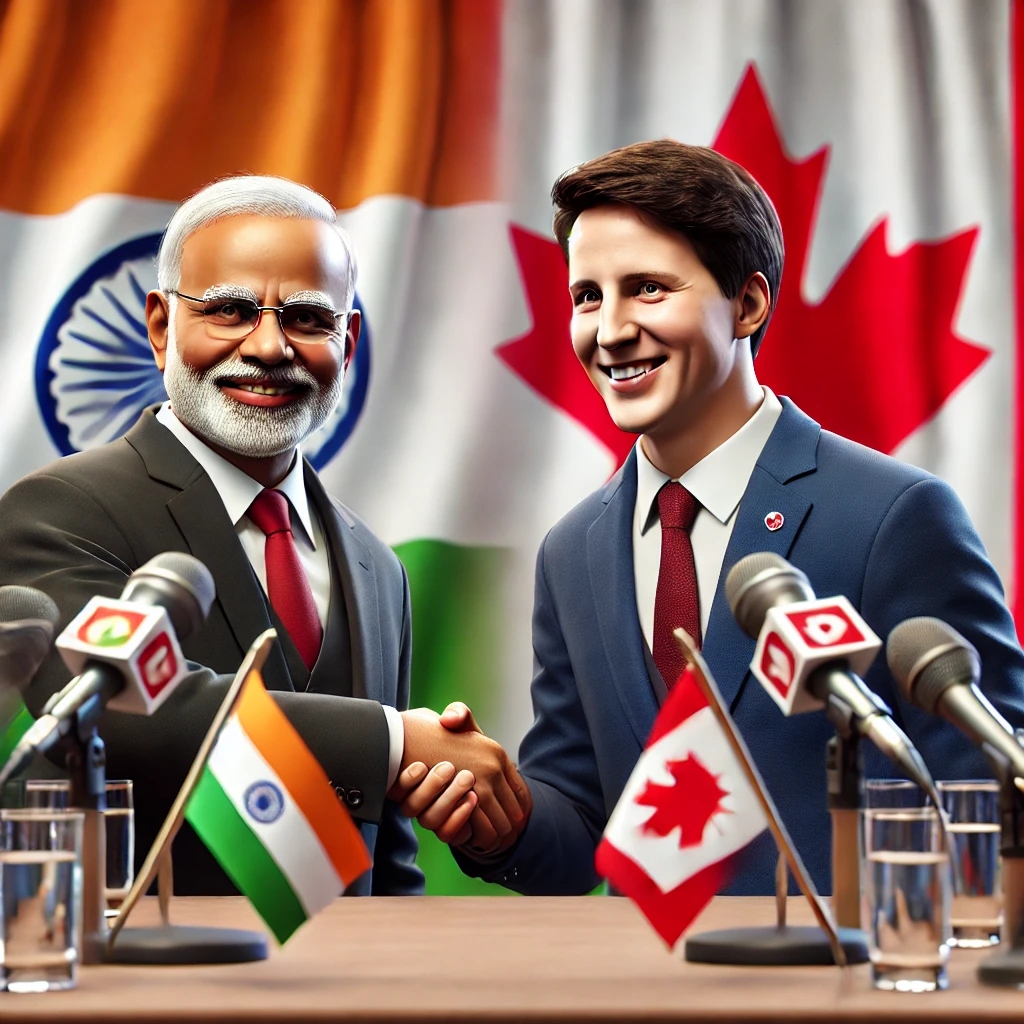The relationship between India and Canada has historically been characterized by shared democratic values, multilateral cooperation, and strong people-to-people connections through a vibrant Indian diaspora. However, recent developments have cast a shadow over this long-standing partnership, bringing to light underlying tensions and complex geopolitical dynamics that threaten to reshape their bilateral engagement.

The foundation of Indo-Canadian relations was laid in the post-World War II era, with both nations maintaining cordial diplomatic ties since India’s independence in 1947. Canada’s support for India’s economic development through various initiatives, including the supply of nuclear technology for peaceful purposes in the 1950s, marked the beginning of a promising partnership. The relationship further strengthened with increasing Indian immigration to Canada, creating a powerful demographic bridge between the two nations. Today, people of Indian origin constitute one of the largest ethnic groups in Canada, contributing significantly to the country’s social, economic, and political fabric.
However, beneath this veneer of cooperation, certain issues have persistently strained the relationship. The Khalistan movement, which advocates for a separate Sikh state, has been a particular point of contention. While Canada’s commitment to freedom of expression has allowed pro-Khalistan groups to operate within its borders, India has consistently viewed these activities as a threat to its territorial integrity and national security. This divergence in perspective has created recurring diplomatic tensions between the two nations.
The situation reached a critical point in June 2023 with the killing of Hardeep Singh Nijjar, a prominent Khalistani leader, in Surrey, British Columbia. The subsequent accusation by Canadian Prime Minister Justin Trudeau in September 2023, suggesting potential Indian government involvement in the killing, marked an unprecedented deterioration in bilateral relations. India vehemently denied these allegations, characterizing them as absurd and motivated by political considerations. The diplomatic fallout was swift and severe, with both countries expelling senior diplomats, India suspending visa services for Canadian citizens, and Canada reducing its diplomatic presence in India.
The international community’s response to this crisis has been notably measured. While traditional allies like the United States, United Kingdom, and Australia expressed concern over the allegations, they carefully balanced their statements to avoid alienating India, recognizing its strategic importance in the Indo-Pacific region and as a counterweight to China’s growing influence. This careful diplomatic choreography reflects the complex web of strategic interests at play, where traditional Western alliances intersect with emerging geopolitical imperatives.
The economic and social impacts of this diplomatic crisis have been substantial. bilateral trade, which had reached approximately $8 billion annually, faces significant challenges. The suspension of visa services has affected thousands of students, tourists, and business travelers. Canadian universities, which have come to rely heavily on Indian students, are particularly vulnerable to these disruptions. Indian students, who contributed an estimated $4.9 billion to the Canadian economy in 2021, are now exploring alternative destinations for higher education.
Beyond the immediate economic implications, the crisis has created social tensions within Canada’s Indian diaspora. The community, which includes both supporters and opponents of the Khalistan movement, finds itself increasingly polarized. This division has manifested in public demonstrations, social media conflicts, and strained relationships within previously cohesive community networks.
Looking ahead, the trajectory of Indo-Canadian relations remains uncertain. While both nations have strong incentives to repair their relationship, including substantial economic ties and shared strategic interests, the path to reconciliation appears challenging. The resolution likely depends on several factors: the outcome of Canada’s investigation into Nijjar’s killing, India’s response to evidence that may be presented, and the ability of both governments to find common ground while addressing their respective domestic political considerations.
The crisis also highlights broader questions about the management of diaspora politics in an interconnected world. As democratic nations increasingly grapple with transnational political movements, the need for robust frameworks to address competing claims of sovereignty and freedom of expression becomes more apparent. The India-Canada situation may serve as a case study for how liberal democracies navigate these complex intersections of domestic politics, international relations, and national security.
Furthermore, this situation underscores the evolving nature of international relations in a multipolar world. India’s more assertive foreign policy stance, coupled with its growing economic and strategic significance, suggests that traditional Western approaches to diplomatic disputes may need recalibration. Similarly, Canada’s position highlights the challenges middle powers face in balancing principles with pragmatic considerations in an increasingly complex global order.
The restoration of normal relations will require careful diplomacy, possibly including back-channel negotiations and third-party mediation. Both nations might benefit from focusing on areas of mutual interest, such as climate change, technology cooperation, and educational exchanges, while working to address their security concerns through established diplomatic and legal channels. However, the fundamental challenge lies in reconciling Canada’s commitment to civil liberties with India’s security concerns – a balance that will require innovative diplomatic solutions and mutual understanding.
